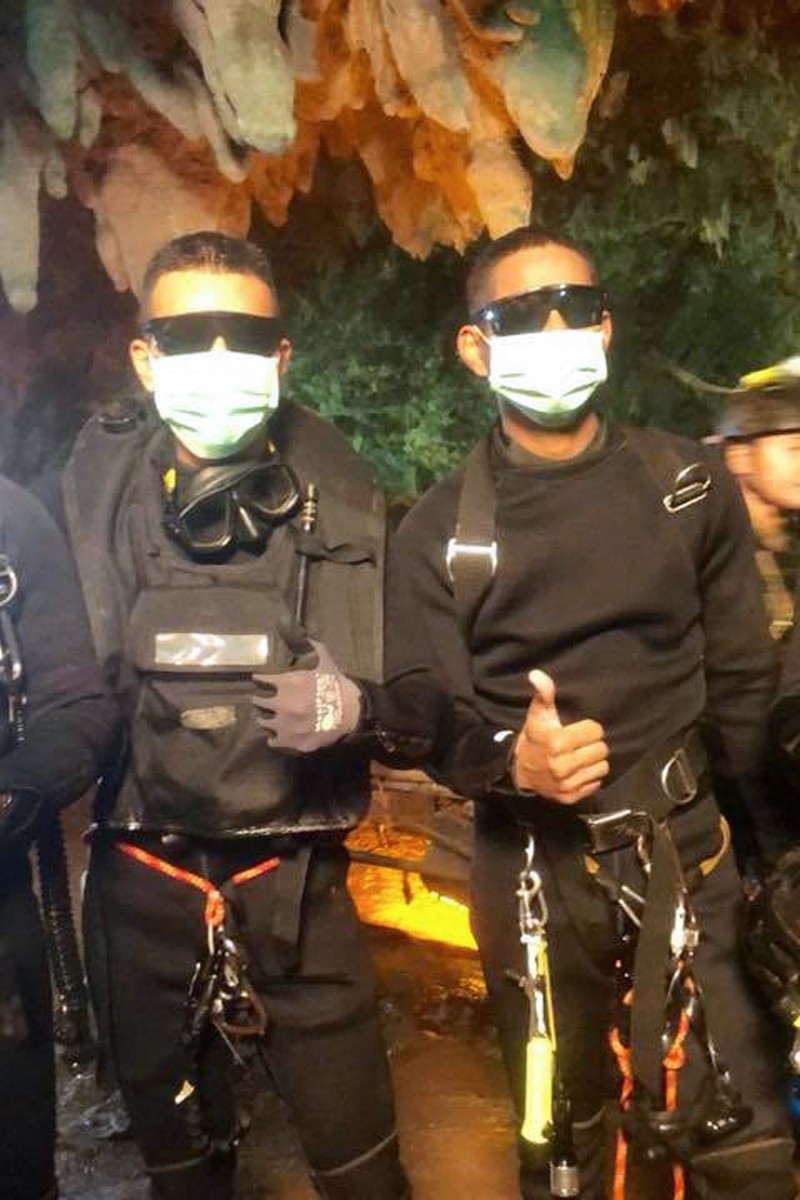 The Thai navy Seals began using it on their facebook posts and everyone else followed.
The Thai navy Seals began using it on their facebook posts and everyone else followed. As Thai navy Seal divers emerged from the Tham Luang caves on Tuesday night, having rescued the last four trapped boys and their coach, they were greeted by a tunnel of people, clapping them on the back. Among the cheers and applause were distinct chants of “Hooyah, hooyah, hooyah!”
It has become the catchcry of the rescue mission. A common noise of celebration in what has been an international, multilingual effort, followed by millions around the world.
“Hooyah” is now trending on Twitter, featuring in fan art about the rescue; news organisations from the New Straits Times in Malaysia to the Daily Telegraph in Australia, are tagging their news articles about the rescue with the hashtag #Hooyah.
Thailand cave rescue: Tears flow as boys and parents see each other for first time
A US navy battle cry, “Hooyah” first appeared in relation to the search for the 12 trapped boys and their football coach on 28 June, five days after they were reported missing by their parents.
The Thai navy Seals, the elite diving squad who led the search for the boys, wrote a message on Facebook thanking people for their support and signed it off: “Hooyah”.
Since then it has appeared on almost all of the Thai navy Seals’ Facebook posts, including the post that contained the miraculous, heart-stopping video of the boys being found by British divers on 2 July . “How many of you? 13? Brilliant,” said the British diver. Or Hooyah, as the Seals might say.
Until the last few days, when clearly aware of their global audience, the Seals began translating their Facebook posts into English, “Hooyah” was often the only word written in English letters in their posts.
Dramatic final lap, personal tragedy, and heroes of the Thailand cave rescue revealed
It was also often the only thing comprehensible to English-speaking readers who have not been helped by the quality of online translation of Thai script, which provided gems like: “Already found wild boar ... But our mission is not over. Frog humans are still diving into space with underwater medicine doctors,” and: “After eating the energy of the sea, the water is imported, and the military doctors who have been through training in the course of the underwater destroyer of the water attack.”
As one person, who was following the search from Pennsylvania, wrote: “I don’t read Thai, but I sure understand that last word they wrote. Universal language for, ‘Oh, yea! We did it!’”
“Hooyah” has become a rallying cry; a triumphant, determined yell that captures something of the grit of the rescuers, the celebration felt the world over at the news, firstly that the boys had been found alive, and then had all been brought to safety.
It is fitting too that the term originated – at least in regard to this rescue – with the Thai navy Seals, who, though brilliantly supported by heroic, expert divers from around the world, have been at the heart of the rescue mission.
It is they who have been searching for the boys since they were reported missing on 23 June, they who stayed with the boys inside the cave for days and nights after they were found but before a rescue could begin, and reportedly formed a strong bond with the boys, many of whom don’t speak English.
And it was four Thai navy Seals who were among the last out of the cave on Tuesday night and posted one final rescue update to their Facebook page: “All 4 Thai Navy SEALs came out safely,” they wrote. “Hooyah Hooyah Hooyah”.
